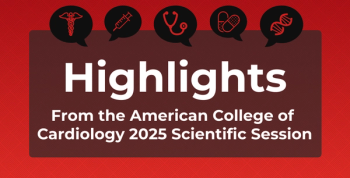
AI Model Accurately Predicts PH Risk in Patients With CKD
Key Takeaways
- Pulmonary hypertension in CKD is frequently underdiagnosed due to nonspecific early symptoms and limited screening practices.
- A machine learning model using basic clinical data can predict PH risk, identifying key predictors like low hemoglobin and elevated NT-proBNP.
Researchers have developed a machine learning model that reliably predicts pulmonary hypertension (PH) risk in patients with chronic kidney disease (CKD).
Pulmonary hypertension (PH) is a serious and often underdiagnosed complication in patients with
Despite
Publishing their research in
Among 25 initial features, 5 were identified as the key independent predictors: low hemoglobin, elevated gamma-glutamyl transferase (GGT), high N-terminal pro–B-type natriuretic peptide (NT-proBNP), presence of coronary heart disease, and low triglyceride levels. These markers collectively capture the interplay between anemia, oxidative stress, cardiac strain, and metabolic dysfunction, core contributors to PH in the CKD population.
The study, wrote the researchers, highlights how common biochemical and cardiovascular parameters can reflect early pathophysiological changes that precede overt pulmonary hypertension. Low hemoglobin and elevated NT-proBNP indicate oxygen deficiency and cardiac strain, while high GGT levels and coronary artery disease reflect oxidative stress and vascular injury. Surprisingly, low triglycerides were also linked to higher PH risk, possibly due to poor nutrition or altered metabolism.
Eight different machine learning models were developed and evaluated, from which the logistic regression model emerged as the most stable and generalizable performer, demonstrating an area under the receiver operating characteristic curve (AUROC) of 0.772 in the training set and 0.782 in the validation cohort.
“This model demonstrates strong performance and provides a practical tool for PH risk assessment during the follow-up of CKD patients,” wrote the researchers. “When the predicted risk exceeds the cut-off value, the model can effectively identify patients who may benefit from further diagnostic evaluation.”
By comparison, more complex models like random forest and XGBoost achieved slightly higher accuracy during training but overfit the data, performing less consistently in external validation. Decision curve analysis confirmed the clinical value of the logistic regression model, which provided meaningful net benefit across a broad range of decision thresholds. When the model predicted a PH risk greater than 46.8%, the authors suggested that patients should be prioritized for echocardiographic evaluation or cardiology referral.
By offering a cost-effective, data-driven way to stratify PH risk using standard laboratory and medical record data, the new model could be incorporated by primary care physicians and nephrologists into electronic health record systems to flag patients most likely to benefit from early echocardiography or cardiopulmonary assessment.
The researchers acknowledged certain limitations, including the relatively small sample size and retrospective design. Because only hospitalized patients were analyzed, the findings may not fully represent the broader CKD population. Moreover, echocardiography, while widely used, is less precise than right heart catheterization for definitive PH diagnosis. The team recommends validating the model prospectively in larger, multi-center cohorts and exploring how it performs alongside emerging biomarkers and imaging modalities.
References
1. Gu W, Li L, Ahmad A, et al. A machine learning-based model to estimate the risk of pulmonary hypertension in chronic kidney disease patients. J Clin Hypertens. Published online September 11, 2025. doi:10.1111/jch.70132
2. Suresh H, Arun BS, Moger V, Vijayalaxmi PB, Mohan KT. A prospective study of pulmonary hypertension in patients with chronic kidney disease: a new and pernicious complication. 2018;28(2):127-134. doi:10.4103/ijn.IJN_36_17
Newsletter
Stay ahead of policy, cost, and value—subscribe to AJMC for expert insights at the intersection of clinical care and health economics.









































